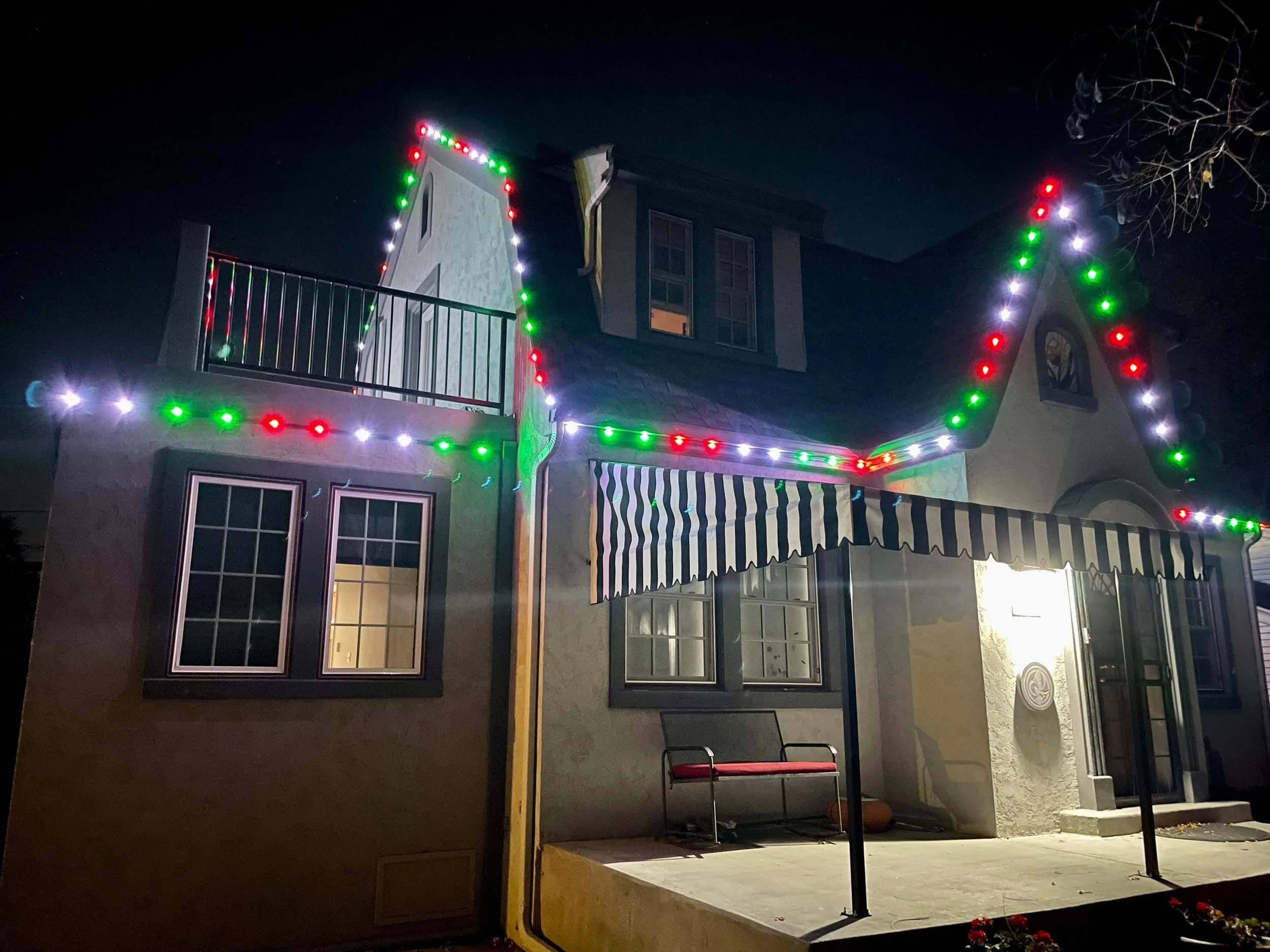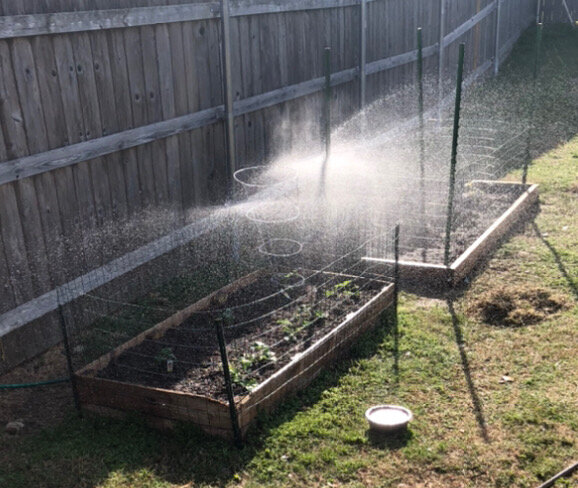The weather is warming up and if you’ve made a trip to a nursery, you’ll notice the fruits and vegetable plants are already being sold.
For North Texas, it’s still a bit early to start planting tender vegetables due to any late frosts which may occur. However, if you’re like me, you couldn’t help yourself and bought some already. That’s okay, just be prepared to cover them if we get any warning of freezing or near freezing temperatures.
My two raised beds pictured below once fully planted will contain:
Tomatoes (Better Bush and Roma)
Squash
Cucumbers
Strawberries (Chandler and Ever-bearing)
Carrots
Cilantro
Basil (Sweet)
Raised Cedar Garden Beds
Adding 2‘ tall fencing and 1 sprinkler for each bed
The Raised Beds are made from cedar wood and their dimensions are 3’x6’x12” and the larger bed is 4’x8’x6”. We have a nosey Great Pyrenees that loves digging so I put posts and chickenwire around the beds to ensure his digging wouldn’t bother the garden. I also added a sprinkler for each bed which may get changed out for drip tubing later on.
Smaller Raised Bed Planting and Setup
After constructing the bed from 2x4’s and cedar fencing pickets, I marked out the location of the bed and dug up the existing turf and replanted it elsewhere. This was completed about 6 months ago. My reasoning to remove the existing Bermuda grass was to try and prevent the grass from growing into the bed through any leftover roots. Unfortunately, my attempt at that was unsuccessful and so on the larger bed I prepped it a little differently. After digging the turf out, I leveled the area and installed the bed. I tilled the soil to depth of 6” and mixed some soil amendments. Tilling occasionally while adding different amendments. I chose all organic products and will not be adding any synthetic chemicals to these beds minus epsom salt, which I consider a fantastic soil amendment for plants in Texas.
80lbs of Lava Sand
80lbs of Texas Greensand
40lbs of Expanded Shale
Around (10) 1 cubic foot bags of the brand Black Kow composted manure and topsoil mixed with composted manure.
6 cubic feet of Peat Moss
12 cubic feet of organic compost
Since this bed was prepped in late summer, I chose not to plant anything and let the soil mix settle. The following year on the 3rd Saturday of March, I added a layer of commercial grade fabric to the top and then mulched the top few inches with Organic compost.
3’x6’ Raised Cedar Garden Bed
Installed fabric and strawberries
After Mulching, I cut “X’s” into the fabric and planted the strawberries and tomatoes. I’ll also be adding Basil and Cilantro, which I started from seedlings.
Due to owning a dog that likes to dig and chew on the garden beds, I installed a small 2’ fence around the perimeter of the bed and finally added a sprinkler to ensure adequate watering.
Almost Completed
Waiting for the Basil and Cilantro seedlings to grow
Larger Raised Bed Planting and Setup
I built this raised bed from 2x6 inch cedar. I marked out the location and instead of digging out the grass, I lightly tilled and removed all the grass I could before adding a layer of commercial grade landscape fabric. In hindsight, I wish I would have used cut up pieces of cardboard boxes or paper fabric for it to be able to breakdown and not need removal later on.
After installing the fabric, I added all organic products but only filled the bed about halfway and will be adding more amendments as the season goes. Since this bed is for Cucumbers and Squash, I built mounds and will be planting in the mounds spaced about 2’ apart.
So Far, I have added the following amendments:
6 cubic feet of Peatmoss
6 cubic feet of Organic Compost
80 lbs of composted manure
I’ll be adding 40lbs lava sand, 40lbs Texas Greensand, 40lbs Expanded Shale, and about 6-12 more cubic feet of and Organic Compost / Composted Manure / Peat Moss Soilless mixture
I do plan on cutting holes in the landscape fabric but am allowing a year for it to kill out the grass underneath.
For any questions please fill out the form below and I’ll be happy to answer them.










